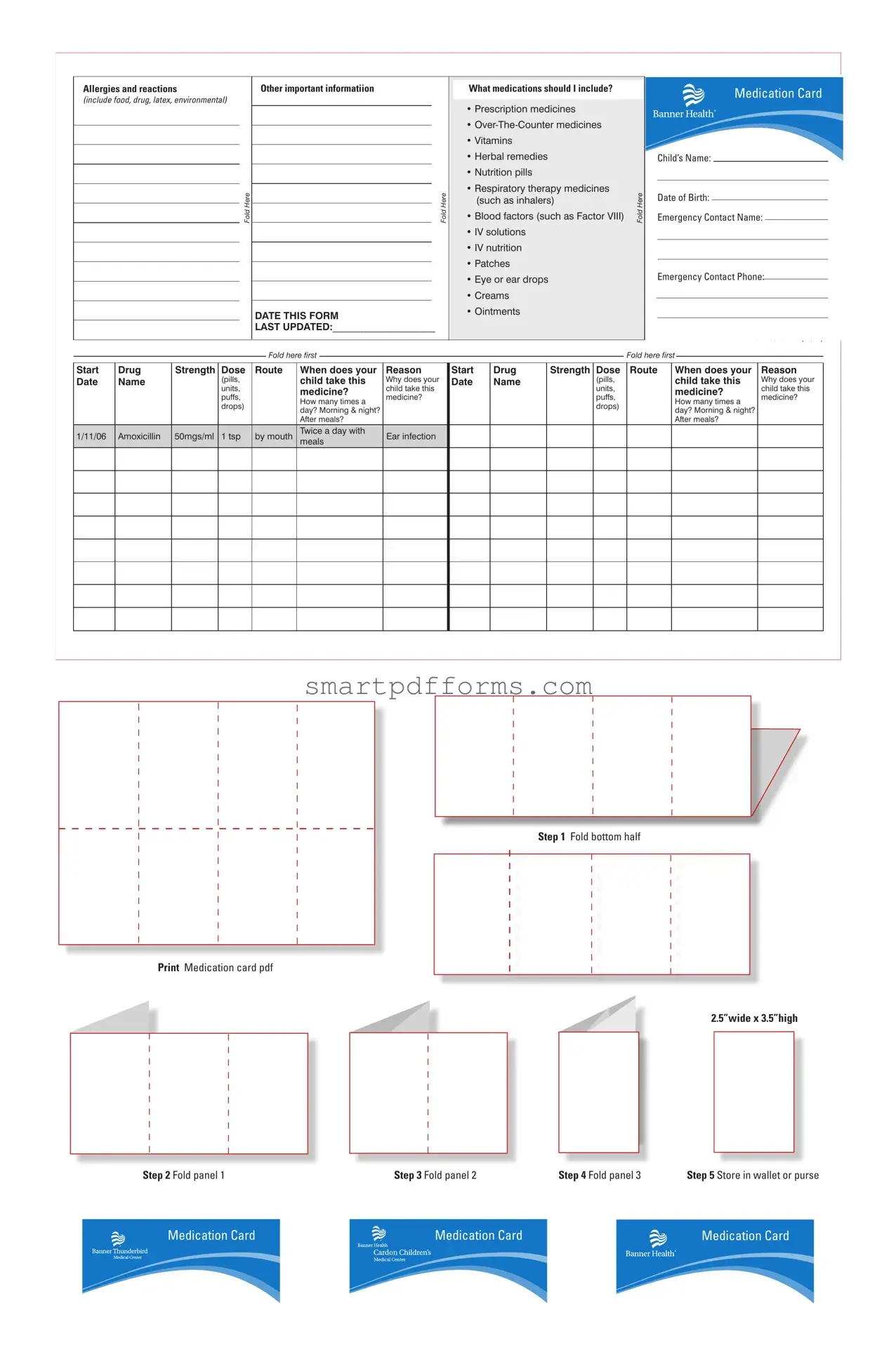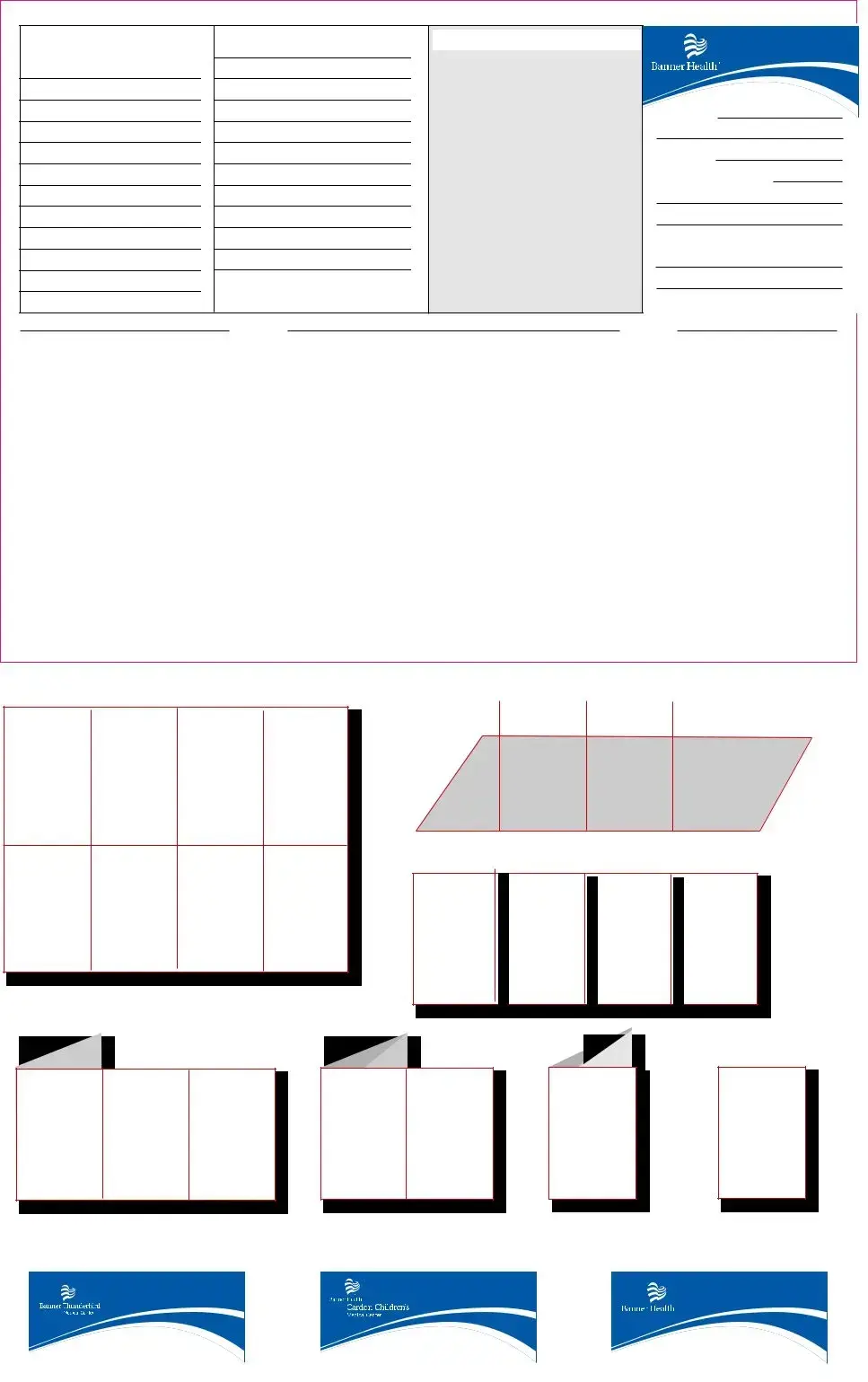Blank Medication List For Wallet PDF Template
The Medication List For Wallet form is a concise, foldable document designed to fit comfortably in a wallet or purse. It provides critical information about an individual's allergies, medication regimen including prescription, over-the-counter medicines, and other important health details. Ensuring this form is up-to-date and readily accessible can be lifesaving in emergencies. Fill out your Medication List For Wallet form today by clicking the button below.
Make This Document Now


